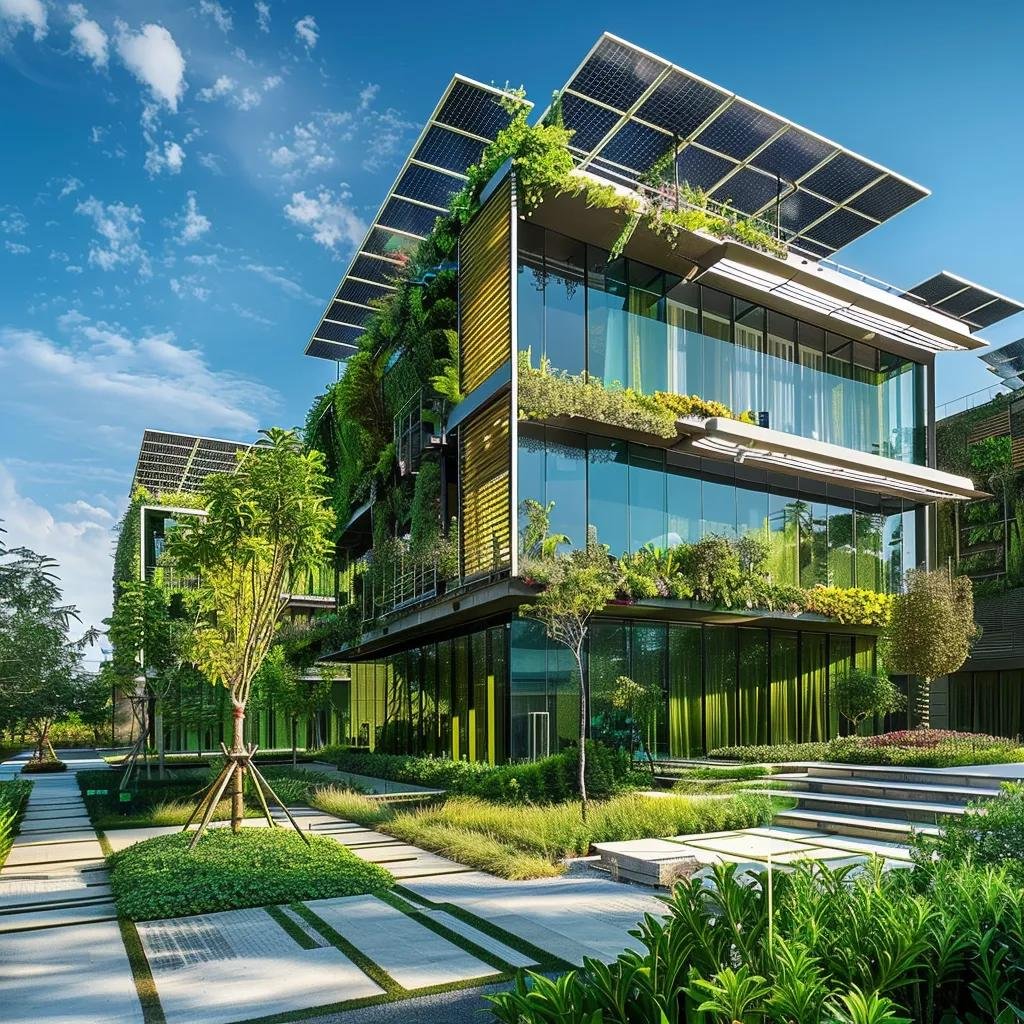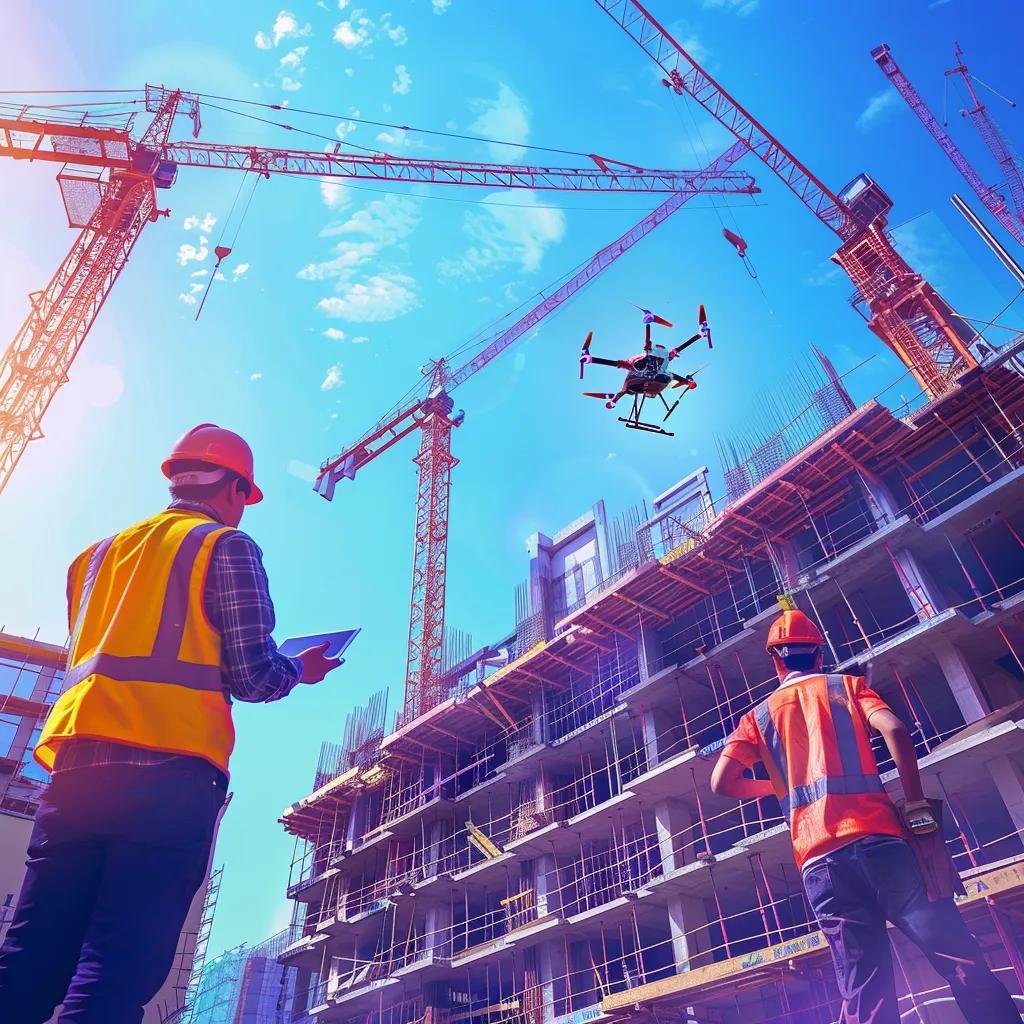Future of Commercial Real Estate Development Trends: Key Insights and Strategies for 2025 and Beyond
Commercial real estate development is entering a transformative phase fueled by digital innovation, sustainability imperatives, and evolving occupant expectations. As Proptech reshapes project planning, smart buildings optimize operations, and ESG criteria drive investment decisions, developers who embrace these shifts will unlock efficiency and tenant demand. This article maps the top CRE trends—Proptech, smart buildings, sustainability, office evolution, industrial growth, wellness, economic forces, design innovations, and future challenges—and shows how businesses can integrate air duct cleaning and commercial cleaning services to maintain healthy, high-performance properties.
Transforming Commercial Real Estate: Insights and Strategies for 2025
Developers must anticipate five core trends—Proptech integration, smart buildings, sustainability focus, workspace evolution, and industrial expansion—to stay competitive. These forces redefine asset value, tenant experience, and long-term ROI.
How Is Proptech Revolutionizing Commercial Real Estate Development?

Proptech applies digital technologies—AI, IoT, VR/AR, blockchain—to automate workflows, improve valuations, and enhance tenant services. By embedding sensors and data analytics in project lifecycles, Proptech accelerates decision-making and reduces operational costs, giving developers a competitive edge.
What Role Do Smart Buildings Play in Future CRE Projects?
Smart buildings leverage IoT sensors, AI-driven controls, and advanced analytics to optimize energy use, mitigate maintenance issues, and personalize occupant comfort. As buildings become data hubs, they deliver 15–25% energy savings and improve tenant satisfaction through automated lighting, HVAC, and security systems—fostering healthier environments and lower overhead.
Why Is Sustainability Becoming Central to CRE Development?

Sustainability in CRE encompasses green materials, carbon reduction, and ESG reporting to meet investor mandates and tenant values. Projects that earn LEED or WELL certifications command rental premiums up to 7% and lower operational expenses through high-efficiency systems and renewable integration, positioning properties as future-proof investments.
How Are Office Spaces Evolving in Response to New Work Models?
Hybrid work models influence office design by prioritizing collaboration zones, flexible desks, and wellness amenities. Instead of rigid cubicles, modern offices feature modular furniture, touchdown spaces, and integrated technology to support both virtual meetings and in-person teamwork—improving productivity and talent retention.
What Are the Emerging Trends in Industrial and Logistics Real Estate?
E-commerce growth triggers demand for last-mile distribution centers, cold storage, and automated warehouses. Industrial real estate now integrates robotics, inventory-tracking IoT, and sustainable roofing to enhance throughput, reduce carbon footprints, and meet accelerated delivery expectations within urban markets.
How Is Proptech Driving Innovation in Commercial Real Estate?
Proptech fuels CRE transformation by deploying advanced technologies to every project phase—from site selection to asset management. This section examines the key tools and their impact on property performance.
What Are the Key Proptech Technologies Transforming CRE?
Developers adopt five leading Proptech solutions to modernize CRE:
- Artificial Intelligence (AI) for valuation and portfolio optimization
- Internet of Things (IoT) sensors for energy and IAQ monitoring
- Virtual and Augmented Reality (VR/AR) for immersive property tours
- Blockchain for secure transaction records
- Predictive Analytics to forecast market trends
These technologies collectively enable data-driven decision-making and tenant-centric services.
How Does AI Improve Property Valuation and Management?
AI algorithms analyze market comps, economic indicators, and occupancy rates to deliver real-time valuations. Machine learning models detect maintenance anomalies and predict tenant churn, allowing managers to schedule preventive repairs and tailor lease terms—enhancing asset longevity and revenue stability.
Proptech and AI in Real Estate
Artificial intelligence (AI) is being used to improve property valuation and management by analyzing market data and predicting tenant behavior. Machine learning models can detect maintenance issues and forecast tenant churn, which helps managers schedule repairs and tailor lease terms to enhance asset longevity and revenue stability.
This research supports the article’s claims about the impact of AI on property valuation and management.
In What Ways Do IoT and Smart Building Technologies Enhance Efficiency?
IoT networks collect data on temperature, humidity, occupancy, and equipment performance. By linking sensors to cloud-based dashboards, property teams achieve:
| Entity | Attribute | Value |
|---|---|---|
| IoT Sensors | Energy Monitoring | 20% reduction in HVAC consumption |
| Smart Thermostats | Automated Controls | 30% fewer manual adjustments |
| IAQ Sensors | Air Quality Alerts | Real-time VOC and particulate notifications |
This real-time transparency lowers utility costs and supports healthier indoor environments.
How Are Virtual and Augmented Reality Changing Property Tours and Design?
VR and AR create immersive site walkthroughs and digital twins, enabling investors and tenants to explore layouts before construction. These experiences accelerate decision cycles, reduce travel costs, and allow architects to iterate designs rapidly—improving stakeholder alignment and reducing change orders.
What Is the Impact of Predictive Analytics on Market Insights?
Predictive analytics synthesizes historical data, demographic trends, and economic forecasts to anticipate vacancy rates and rent growth. By modeling “what-if” scenarios, developers can optimize location strategies, budget contingencies, and marketing campaigns—minimizing risk and maximizing returns.
Why Is Sustainability and ESG Critical in Future Commercial Real Estate Development?
Sustainability and ESG considerations now underpin financing, design, and operations in CRE. Adoption of green standards signals corporate responsibility and attracts capital from socially conscious investors.
What Are the Leading Green Building Certifications and Standards?
Green certifications validate environmental performance:
| Certification | Attribute | Benefit |
|---|---|---|
| LEED | Energy Efficiency | 15–20% operational cost savings |
| WELL | Occupant Well-being | Enhanced IAQ, lighting, and fitness access |
| BREEAM | Life-Cycle Impact | Reduced embodied carbon |
| Fitwel | Health Metrics | Optimized occupant productivity |
Sustainability and Green Building Certifications
Green building certifications like LEED and WELL are becoming increasingly important in commercial real estate. These certifications help to lower operational costs and attract tenants. Properties with these certifications can command higher rental premiums and are seen as future-proof investments.
This citation supports the article’s discussion of the benefits of green building certifications.
How Do Energy Efficiency Solutions Benefit Commercial Properties?
Energy upgrades—including LED lighting, variable-speed drives, and high-performance glazing—deliver 10–30% cost reductions. Enhanced thermal envelopes and smart metering not only lower utility bills but also improve tenant retention by ensuring consistent comfort levels.
What Role Does Renewable Energy Integration Play in CRE Projects?
On-site solar and wind installations cut carbon footprints and stabilize operating expenses. Net-metering agreements allow excess generation to offset grid consumption, while battery storage systems ensure continuity during peak demand—boosting resilience and sustainability.
How Are Circular Economy Principles Applied in Real Estate Development?
Developers embrace material reuse, modular construction, and waste-to-energy strategies:
- Salvaging structural elements from decommissioned sites
- Designing for disassembly and future repurposing
- Implementing on-site composting and recycling programs
These practices lower embodied carbon and align with ESG reporting requirements.
How Does ESG Reporting Influence CRE Investment Decisions?
Transparent ESG disclosures enable investors to compare carbon intensities, social impact metrics, and governance policies. Properties with high ESG scores often secure lower financing rates and attract long-term tenants, positioning such assets as lower-risk, future-ready investments.
How Are Wellness and Healthy Building Trends Shaping Commercial Real Estate?
Wellness real estate blends biophilic design, IAQ focus, and mental health amenities to support occupant well-being and productivity.
Why Is Indoor Air Quality (IAQ) Essential for Future Commercial Buildings?
IAQ directly affects respiratory health, cognitive performance, and occupant satisfaction. Buildings equipped with advanced filtration, ventilation controls, and real-time monitoring reduce absenteeism and elevate tenant retention—making IAQ a core performance metric.
How Does Biophilic Design Improve Occupant Well-being?
Integrating natural elements—living green walls, daylight optimization, and water features—reduces stress and enhances creativity. Empirical studies show that biophilic workplaces boost concentration by up to 15% and accelerate healing in adjacent healthcare facilities.
What Mental Health and Wellness Amenities Are Emerging in Offices?
Forward-looking developers now include:
- On-site fitness centers with smart equipment
- Meditation and mindfulness spaces
- Ergonomic workstations with sit-stand desks
- Wellness rooms offering acupuncture or massage
These amenities differentiate assets and justify premium rents.
Wellness and Healthy Building Trends
The integration of wellness amenities, such as fitness centers and meditation spaces, is becoming more common in commercial properties. These amenities can attract high-performing tenants and increase occupancy rates. Properties with wellness features often command higher rents and have lower turnover rates.
This research supports the article’s claims about the benefits of wellness-centric commercial properties.
What Is the Business Case for Wellness-Centric Commercial Properties?
Properties offering wellness features command rental premiums of 4–7% per square foot and enjoy lower turnover rates. Health-focused workplaces attract high-performing tenants, enhancing occupancy stability and long-term asset value.
How Do Professional Air Duct Cleaning and Commercial Cleaning Services Support Healthy Buildings?
Maintaining optimal IAQ and hygiene requires specialized services.
- Air Duct Cleaning Services remove dust and microbial build-up to ensure efficient airflow.
- Commercial Cleaning Services apply hospital-grade disinfectants to high-touch surfaces, reducing pathogen transmission.
Investing in these services enhances occupant health and aligns with wellness certifications. Explore our air duct cleaning services and commercial cleaning services to keep your building healthy and compliant.
What Are the Economic and Regulatory Factors Influencing CRE Development?
Economic cycles and policy frameworks shape project feasibility and timelines.
How Do Interest Rates and Inflation Affect CRE Financing?
Rising interest rates increase borrowing costs and reduce leverage capacity, forcing developers to adjust pro formas and extend hold periods. Inflation pressures material costs and labor rates, impacting budget forecasts and ROI projections.
What Are the Key Zoning and Regulatory Hurdles in CRE Development?
Regulatory constraints—from density caps to environmental impact assessments—can delay approvals. Navigating local zoning laws, building codes, and community engagement is essential to avoid costly redesigns and legal challenges.
Which Financing Strategies Are Effective for Commercial Real Estate Projects?
Successful developers deploy a mix of:
- Joint Ventures to share risk and expertise
- Mezzanine Debt for flexible capital layering
- Tax-Increment Financing to fund public improvements
- Green Bonds to underwrite sustainable features
This diversified approach stabilizes cash flow and aligns funding with project objectives.
How Do Supply Chain Disruptions Impact Construction Costs and Timelines?
Global supply chain bottlenecks inflate material lead times and prices, requiring contingency reserves. Prefabrication and local sourcing strategies mitigate delay risks and improve schedule reliability.
What Role Do Public-Private Partnerships Play in Urban CRE Development?
Collaborations between municipalities and private developers unlock access to public land, infrastructure funding, and streamlined permitting. These partnerships accelerate mixed-use and affordable housing projects while sharing development risks.
How Is Commercial Space Design Evolving to Meet Future Demands?
Design thinking now balances flexibility, resilience, and tenant experience across asset classes.
What Defines the Hybrid Office Model and Its Design Principles?
Hybrid offices blend individual focus zones with collaborative hubs. Key principles include modular furniture, integrated AV systems, and mobile connectivity to support seamless transitions between in-office and remote work.
How Is Industrial Real Estate Adapting to E-commerce and Logistics Growth?
Warehouses now feature high-bay automation, robotics integration, and cross-dock layouts. Adaptive bays and smart racking systems improve throughput, while dark stores cater to rapid retail fulfillment requirements.
What Are the Latest Trends in Retail Real Estate Transformation?
Brick-and-mortar evolves into experiential destinations:
- Pop-up retail and event spaces
- Mixed-use developments combining shops, residences, and hospitality
- Interactive digital storefronts and click-and-collect kiosks
These innovations engage consumers and drive foot traffic.
How Is Multifamily Development Addressing Housing Demands?
High-density, mixed-income communities integrate co-working lounges, rooftop gardens, and shared amenities. Transit-oriented developments close to employment centers reduce commute times and promote sustainable urban living.
What Are the Benefits of Adaptive Reuse in Commercial Properties?
Adaptive reuse converts obsolete buildings into modern assets, preserving heritage while lowering embodied carbon. Renovations often cost 20–40% less than new construction and attract tenants seeking unique, character-driven spaces.
What Challenges and Opportunities Will Shape the Future of Commercial Real Estate Development?
CRE faces financing constraints, regulatory complexity, and evolving tenant expectations—but also abundant innovation and market niches.
What Are the Main Development Challenges Facing CRE Today?
- Securing affordable capital amid rising rates
- Navigating multi-jurisdictional regulations
- Managing escalating construction costs
- Meeting shifting tenant demands for flexibility and wellness
Addressing these challenges requires agile strategies and robust data analytics.
How Can CRE Businesses Leverage Digital Marketing to Capitalize on Emerging Trends?
By partnering with an experienced digital agency, developers can amplify Proptech adoption, sustainability credentials, and wellness features to target tenants. Mastodon Marketing specializes in CRE lead generation through SEO, content marketing, and local outreach—driving high-intent inquiries and boosting portfolio performance.
What Are Actionable Steps for CRE Owners to Implement Smart and Sustainable Solutions?
- Conduct a Technology Audit to assess Proptech readiness.
- Upgrade Building Systems with IoT sensors and automated controls.
- Pursue Green Certifications (LEED, WELL) to enhance market appeal.
- Schedule Regular Air Duct Cleaning to maintain IAQ.
- Engage Tenants with wellness programming and feedback loops.
These measures deliver measurable ROI in energy savings, tenant satisfaction, and asset value.
How Can Local CRE Markets Adapt to Global Trends?
Local markets can benchmark global best practices—smart building pilots, community-centric design, and sustainable financing—and tailor them to regional regulations and demographics. Partnering with local service providers for air duct cleaning services and commercial cleaning services ensures buildings meet rising health and performance standards.
By integrating technology, sustainability, wellness, and strategic marketing, CRE developers will thrive in the evolving landscape of 2025 and beyond. Designing future-ready properties and maintaining healthy environments through professional cleaning services will position portfolios for long-term growth and tenant loyalty.





